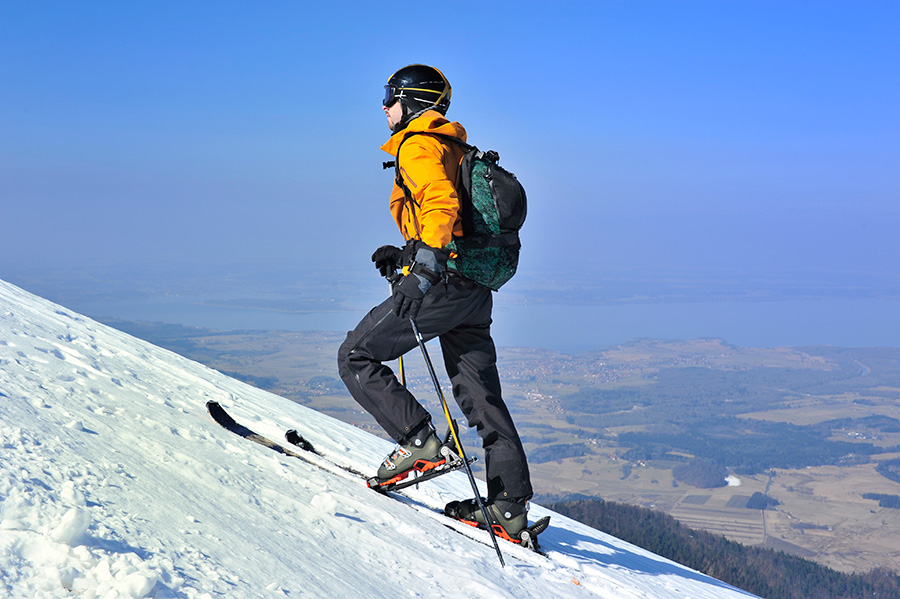
Ski touring, backcountry skiing, splitboarding, ski mountaineering, randonnee… whatever you call it, exploring the backcountry on skis is becoming more and more popular.
Just the idea of escaping into nature away from the crowds and riding untouched snow may sound really good, but where does one start? The two essential components is education and gear. This article will tackle the equipment component you’ll need to head out on your first ski tour.
Skis
Theoretically, any downhill ski can be set up for use in the backcountry, however, alpine touring skis are designed specifically for backcountry use. They typically feature lighter weight designs that make the uphill portion drastically easier.
Backcountry skis range from the thin cross-country racing styles focused mainly on uphill mobility and speed, to more freeride focused models that offer similar dimensions and rocker profiles to the latest and greatest powder skis.
Typical touring features like notches in the tip and tail for attaching climbing skins are usually standard on backcountry skis. With the low weight design comes some sacrifice in other areas though — usually in the ski’s ability to remain damp and chatter-free on hard snow — or to resist impact damage to edges and the base. Keep this in mind during selection. If you don’t plan on spending most of your timing hiking untracked lines, a standard resort ski may be more what your looking for.
Skins
Skins are pre-cut/ready-to-cut sections of plush material that stick to the bottom of the skis and allow one to travel uphill without sliding back down. The skis have a ‘nap’ that helps grip the snow in one direction, and glide in the other, making sliding backwards almost impossible.
Skins are made of mohair, synthetics or a synthetic/mohair blend. Synthetics are durable and grippy, while mohair skins glide with superior speed and efficiency, but may not grip as well as synthetics. Skins with a blend of mohair and synthetic offer a balance of these qualities.
Clips at the tip and tail and a sticky, non-permanent glue compound keep a skin attached to your ski. Most skins use clips that will universally attach to any ski, although pre-cut skins are often designed to interface with holes or notches in particular models of ski.
Bindings
Backcountry touring bindings allow for ones heel to move freely up and off of the ski while skinning uphill. This creates an easier, more natural stride. When your ready to ski down, the bindings lock down in the heel. Several types of touring bindings include: low-profile, lightweight tech bindings that are only compatible with AT boots with dimpled tech inserts, frame-style AT bindings that are compatible with traditional alpine boots, and hybrid bindings, which are a blend of the two.
Boots
Touring boots, like some of the newer downhill ski boots, feature a walk mode that allows the ankle area to pivot freely, providing better range of motion when hiking and skining. Lightweight by design, the user can move faster and feel less fatigued during a long tour. Be sure you are getting boots that are compatible with your bindings.
Ski Pack
Everyone should have a “tough” backcountry ski pack. These things will get tossed around, layed in snow, scraped against trees, and so on. They need to be able to carry your skis, offer decent storage capacity, and a sleeve/storage made for holding your shovel, avalanche probe, avalanche beacon, extra layers, extra gloves, food, emergency essentials (multi-tool knife, duct tape, headlamp, lighter
Education
Lastly, as brought up earlier, eduction is the second essential part of ski-touring. We can’t emphasize it enough to “know before you go”. An avalance 101 course may be a good start, as well as internet research and expert opinions. Maybe look in to books on the subject, but definitly read up before you get out there.
Image Source: Google
